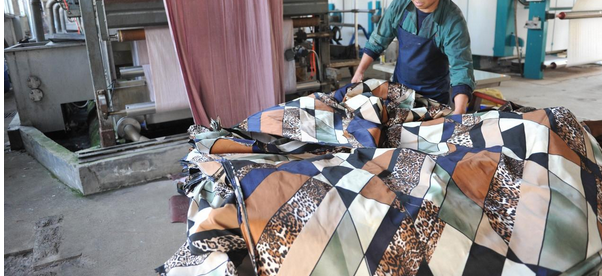Today I went to a company engaged in the nail art industry because they wanted to order a batch of moxibustion clothing and wanted us to help process it. Nail art companies need to integrate with fashion clothing. This should be considered a cross-border cooperation. During the conversation with the beautiful lady who was purchasing the clothes, maybe because she didn’t know much about clothing, she found it very difficult to see a printed piece of clothing and said that the printing was very difficult to make. In fact, when I look at the clothes, the simplest ones are the printed T-shirts, while the other Chinese-style buckle-style clothes are more complicated to make.

Because there have been more customers ordering T-shirts recently, and most of these clothes involve printing processes, today I would like to share with you some knowledge about clothing printing. I mainly share with you some classifications of printing processes and the advantages and disadvantages of different processes. Because I have only been exposed to it a lot, printing is not my specialty. Please forgive me if there are any shortcomings.
In terms of printing technology, the general industry is divided into flat screen printing, rotary screen printing, heat transfer printing, digital printing and heat transfer technology. Flat screen printing has a wide range of applications, there are fewer restrictions on pattern and color registration, and it can also be operated for small orders. But generally large orders are more suitable for rotary screen printing with faster speed and more colors. The cost of thermal transfer printing is relatively small, but the order volume needs to be relatively large to make it easy to operate. Digital direct printing and heat transfer are relatively popular processes in recent years, requiring the use of different dyes according to different fabric materials.
From the specific printing operation methods, there are the following types:
1. Water slurry printing: The advantage is that the printed fabric feels better and does not increase the thickness of the fabric. The disadvantage is that the quantity requirements are relatively high. Large, dark water slurry prints can easily cause fading.
2. Glue printing: This is the most common printing method. The advantage is that the printing colors appear bright and three-dimensional, but the disadvantage is that the fabric tends to feel stiff and the glue may break if used in a large area.
3. Foam printing: This is actually based on offset printing with a puffing agent added to it, allowing the printing part to expand through high temperatures to form a three-dimensional effect.
4. Flocking printing: This is a method of pressing the velvet fabric at high temperature and implanting it into the fiber on the fabric. Generally, the cost of flocking printing is relatively high.
5. Discharge printing: It is a method of using professional discharge agent to partially eliminate color on dyed fabrics, so that the local color forms a white or colorful pattern. The cost is relatively high.
6. Hanging dye printing: This process is to hang the garments and soak them into a high and low dyeing tank. Due to the different colors in the tank or the different soaking time, the clothes will appear in different levels of color. Or a dyeing effect from light to dark.
At present, I have been in contact with printing factories, and what I have learned is basically these methods. Of course, with the continuous emergence of new materials and new processes, there must be more that I don’t know. Colleagues in the printing industry are also welcome to add. . For colleagues and customers who make clothing, understanding some knowledge in this area will definitely be of great help to your work. I hope everyone will continue to pay attention to my headline account and I am willing to share with you some clothing knowledge to the best of my knowledge.







